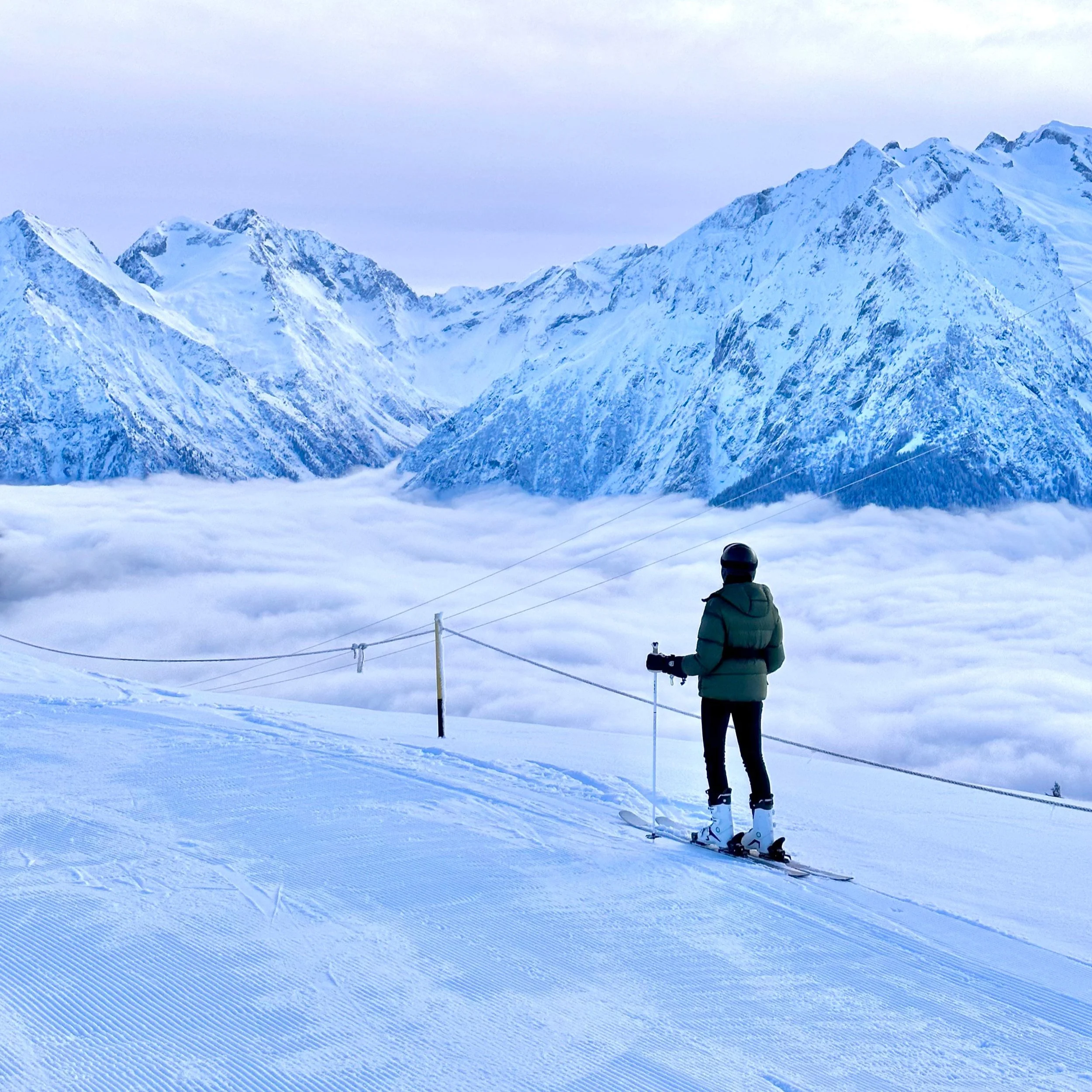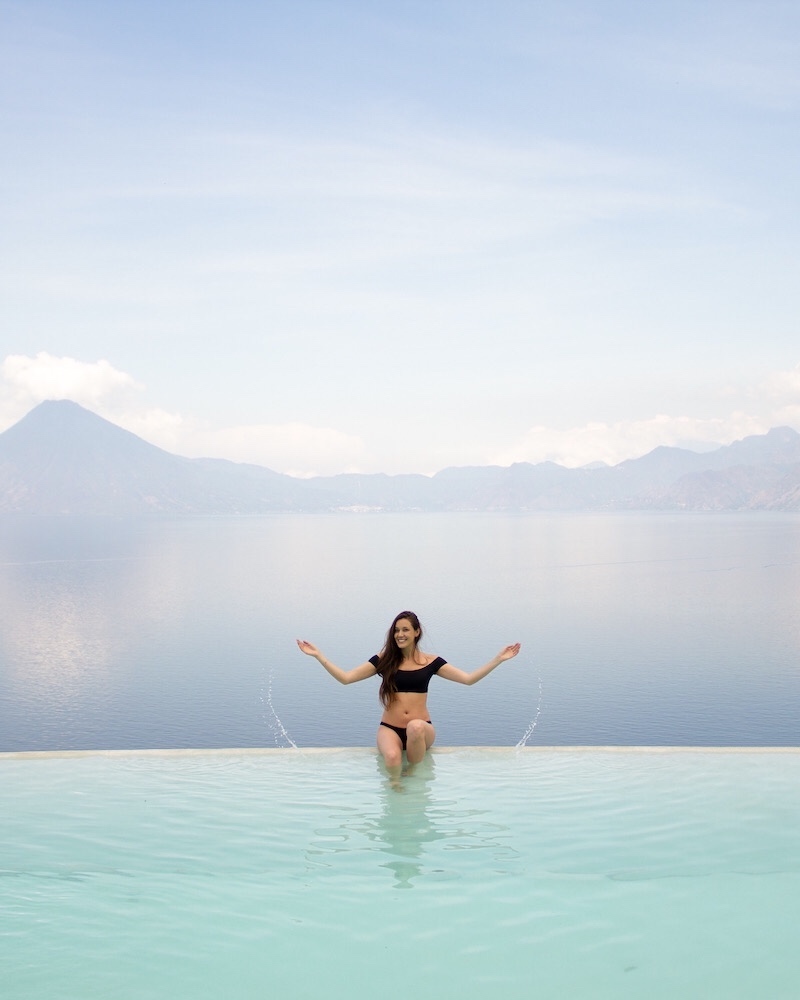Tips for Planning a Ski Trip in Today's Changing Climate
/Weather patterns are becoming more extreme across the globe, and each year it’s becoming more difficult to anticipate what kind of winter our favorite mountain destinations will be getting. In just the last few years alone, some regions saw such little snow that stations decided to close for good, while other regions received so much snow that entire homes, towns, and roads were buried and inaccessible.
While we always hope for just the right amount, too little snow or too much snow can put a damper on your skiing plans. With any trip, it’s always best to start considering your options and making reservations early, but with unpredictable weather and unreliable snow conditions, choosing a ski destination months in advance can feel like a gamble. In my experience planning ski trips in Colorado, California, Canada, France, Switzerland, Italy, and Austria in just the last few years, I’ve learned that by managing my expectations and following these tips below, you can increase your chances of having a great ski trip.
1. Choose accommodations in between several stations
While staying right at the base of mountain or beside a ski station’s gondola may be the ultimate convenience in a good snow season, if there’s a lack of snowfall and conditions are not ideal, those same accommodations could very easily feel remote, inaccessible, and inconvenient. By renting a car and choosing a village or town in between various stations, you’ll be able to conveniently drive to a ski station with better conditions and make the most of your trip.
Also note, just because a property advertises it is “ski in/out” doesn’t always guarantee you’ll be able to do so— it would be dependent on the current conditions. During the 2022/23 season (a low-snowfall season), I skied more than 30 days in the French, Swiss, and Italian Alps, and witnessed many luxury “ski in/out” properties that were completely dry and inaccessible during their “peak season”.
2. Rent a winter-capable car
Having a car during your ski trip means you can have access to the best conditions at any station in the area. Be sure to choose a rental car with winter tires (in my opinion— snow chains and snow socks are less reliable, inconvenient, and can be dangerous if you don’t know how to apply them correctly). When I travel to a cold, snowy destination where I’ll be renting a car, I always bring this handy and compact ice-scraper tool that quickly removes ice from windshields, windows, and mirrors.
3. Choose areas with stations at higher elevations
It may be common sense that ski stations at higher elevations will have a better chance of lower temperatures and more snowfall, but it may take a bit of time to research the elevations of individual stations, their bases, and their peaks. It’s also worth researching how much of a skiable area exists at higher elevations— for example, in the four weeks I spent based in Chamonix, France during the 2022/23 season, I only saw snow down in the valley (1000m elevation) on one morning. However, the bases of the town’s main skiable areas, Brévent and Flégère, exist above 1900m elevation, with peaks upwards of 2500m elevation, so there was plenty of decent snow to ski throughout the entirety my trip.
4. Choose areas with alternative activities
If you want to make the most of your trip and aren’t able to rely on perfect snow conditions, choose accommodations close to or in a town where you can access other activities. If it’s not cold enough for skiing, you may also be limited on availability of other snowy activities like sledding, snow-shoeing, or ice-skating, but a bit of research could offer insight into a destination’s nightlife, dining options, family-friendly activities, and more.
5. Plan a longer trip if possible
Planning a longer trip can increase your chances of your travel dates coinciding with better conditions for skiing. While it may not be the most realistic for some, I’ve been especially grateful that my remote-work lifestyle has allowed me to fully relocate to the mountains during the ski season. If you are able to travel for a longer period of time, you could also take advantage of weekly or monthly discounts on your accommodations or car rental while you hopefully wait out and benefit from at least one snow storm.
6. Select refundable or changeable bookings
If you’re able to be flexible, make bookings that are also flexible. While accommodations and reservations would be subject to availability, you could potentially re-organize your trip as your arrival date approaches and you have a better idea of snow conditions. It may also be worth paying a rate that allows for cancelation in case your arrival date approaches and you decide it’s not worth it to travel.
7. Consider booking through Club Med, which offers a Snow Guarantee
I’ve had great experiences skiing at a few of Club Med’s All-Inclusive mountain resorts in the French Alps and in Quebec Canada, and something unique that they offer is a Snow Guarantee. You can click here to read the exact terms, but essentially, if book a stay with them and snow conditions are unfavorable in that resort’s domain, you can change your reservation to another resort in the Alps that has better conditions. Currently there are more than a dozen Club Med mountain resorts in the French and Italian Alps, so you could book your ski trip with peace of mind that you will have a great time even if Mother Nature has her own plans.
8. Have a positive attitude— Bad conditions make good skiers ;)
In my experience learning how to ski as an adult, something I noticed that helped me improve relatively rapidly was exposing myself to various conditions and getting comfortable skiing them. Observing my responsiveness and testing my abilities on icy or crusty conditions, or in heavy, wet snow definitely contributed to making me a better skier, and most importantly— made me much more appreciative when on a perfectly groomed piste or in fresh powder.
9. Find reliable and detailed weather reports for stations worldwide
I personally subscribe to Snow-Forecast.com which provides detailed forecasts for ski stations, as well as trail maps, terrain maps, and the ability to bookmark your top stations. One of my favorite features of Snow-Forecast’s app is a ranking of stations within a certain radius of your location, so you can easily find where the best conditions are expected based on their forecast and algorithm.
10. Be prepared with your gear
Versatile pieces of gear and apparel are best suited for unpredictable weather and changing conditions. Consider packing high-quality, functional layers that can be added or shed as temperatures cool down or warm up; a waterproof shell for potential rain; and goggles with interchangeable lenses for variation in visibility. If you’re traveling with your own or will be renting at your destination, all-terrain skis could be a solid choice for the variety of conditions that you might even experience within a single day. (I’ve written an article here on all the ski gear, apparel, and accessories that I use and love.)
11. Get smarter about avalanche awareness
With weather patterns changing and becoming more extreme, it’s always a good idea to get more serious about avalanche education and preparedness. Definitely heed any and all warnings and exercise caution when visiting any terrain, whether it’s familiar or not. Consider taking an avalanche awareness course and becoming equipped with gear that can aide in a rescue operation: a beacon, a probe, and a shovel. And while it’s not a replacement for avalanche education or rescue equipment, I suggest purchasing a RECCO reflector, a simple device that can help locate you in the event of an avalanche within a resort or ski station. You can click here to read a bit about the wake-up-call that inspired me to get smarter about avalanche preparedness, and why RECCO is a must-have for every skier.
Have you had a ski trip canceled or have you had a disappointing experience on the mountain due to weather? Hopefully you were able to make the best out of the situation and aren’t discouraged from getting back out there. Let me know in the comments below if you agree/disagree with any of the tips shared here or if you have any to add!
About the author
Meet Carina Otero, avid skier and the creator of She is Not Lost, an online community for celebrating female travelers and a blog providing helpful tips, useful information, and inspiration for your future travels. Carina’s passion for skiing and love of writing and photography have inspired a new blog to share her experiences and personal favorites relating to the sport:
Discover Ski is Not Lost
This post contains affiliate links and at no cost to you, I may earn a commission which allows me to keep this site free for all readers. I only recommend properties, products, brands, and services that I personally use and believe in.






































